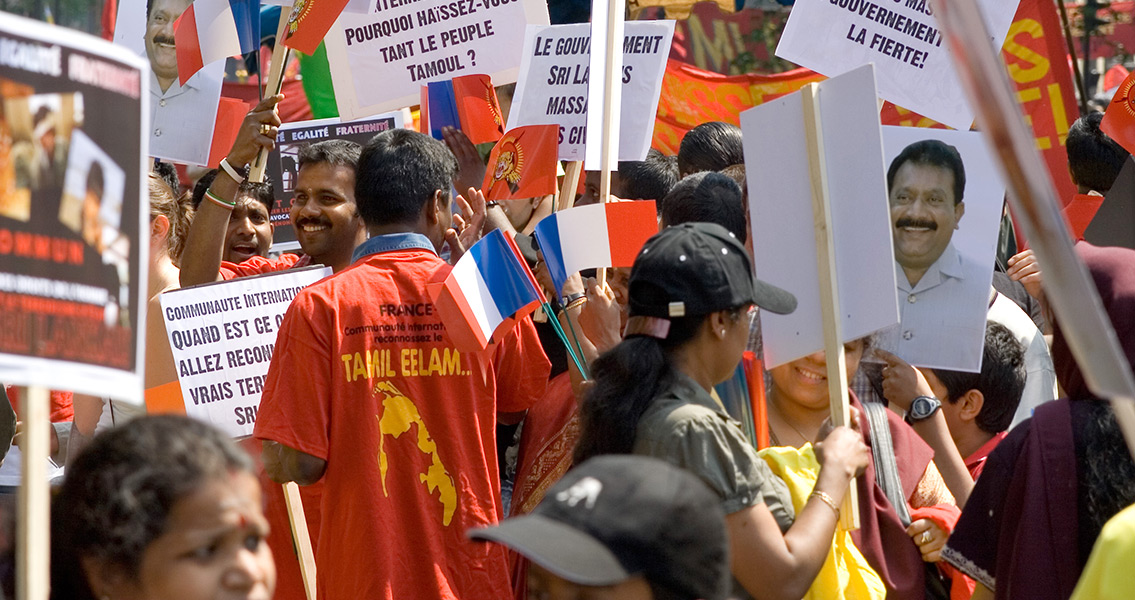<![CDATA[President Maithripala Sirisena of Sri Lanka recently told the BBC that the country hoped to set up a domestic inquiry into the atrocities of the Sri Lankan Civil War, "within a month". The twenty six year long conflict, which came to an end in 2009, remains a hugely divisive issue in Sri Lankan society. Both sides in the war have accused the other of atrocities and murder. A United Nations report in 2011 concluded both parties were guilty of war crimes, although the Sri Lankan government rejected these findings, accusing the report's compilers of bias. Sirisena's predecessor, Mahinda Rajapaksa, repeatedly refused to collaborate with the UN in investigating the war. The civil war is an event from history so recent its effects can still be vividly felt in Sri Lanka today. The reason that so much weight is placed on the conclusions of any report into the conflict is because it is still so directly connected to the present. By looking at the broader history of Sri Lanka, it is possible to gain some understanding of the origins of the divisions that split Sri Lankan society. In the fifth century BCE, migrants from northern India first began to settle on the island. Quickly, the Sinhalese people established themselves as the dominant clan on what is now Sri Lanka. Roughly two hundred years later, Tamil migration from India started, with the people forming a significant minority in the northern region of the island. From the sixteenth century CE, the island fell under the influence of European empires. In 1505, Portugese explorers arrived in Colombo, marking the first European colonial interests in Sri Lanka. In 1658, the Dutch forced the Portuguese off of the island, taking over the whole territory with the exception of the Kingdom of Kandy, an independent Sinhalese monarchy in the central region of the island. British interests in the late eighteenth century forced out the Dutch forces, and by 1818 the Kingdom of Kandy had also fallen under British rule, bringing to an end its two centuries of resistance to European influence. In 1833 the whole island was brought under a single British administration, laying the foundations of what would become the single country of Sri Lanka. In the nineteenth century a host of British plantations were built on the island, growing crops such as coffee, tea and sugar. Called 'Ceylon' by the British rulers, it became one of the British Empire's main tea producers. More Tamil labourers were brought from India, adding to the already existing population in the north. Tensions rose between the predominantly Hindi Tamils and the mainly Buddhist Sinhalese, partly as a result of perceived British favourtism to the Tamils. Growing Sinhalese nationalism meant that by the time Ceylon was granted independence in 1948, the peace had become perilous, particularly in the Tamil areas in the north and east. Following independence, the Ceylon (and from 1972 Sri Lankan) government was dominated by Sinhalese politicians thanks to the people's numerical majority. Tensions escalated through a series of controversial policies and confrontations. Sinhalese was made the sole official language in 1956, while a series of violent protests and demonstrations in the 1950s and 1960s revealed the increasingly volatile situation. In 1976 the Liberation Tigers of Tamil Eelam was formed, a secessionist organisation which aimed at creating an independent Tamil state in the north-east of the country. In the 1980s the civil war started, devastating the country and killing 70,000 people in its wake. The twenty six year war was an undoubtedly brutal conflict. The chronology of its causes can be easily charted. The reality of events during the fighting and the various claims and accusations associated with them however, may never truly be comprehended. Image courtesy of Wikimedia commons user: Nelson Minar]]>
The Sri Lankan Civil War
